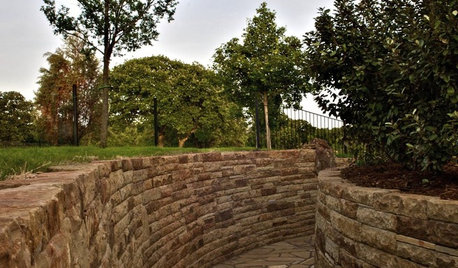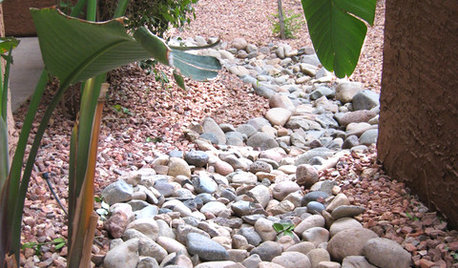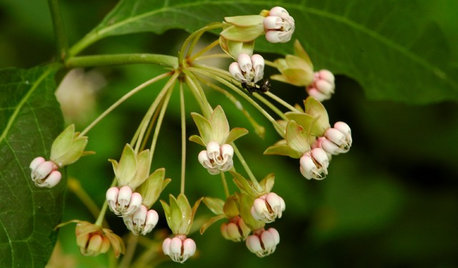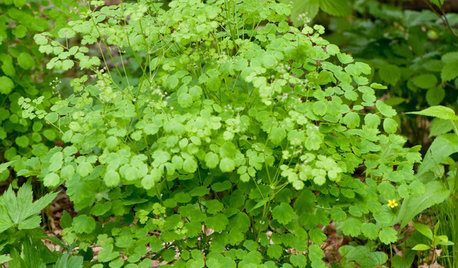Is it dry?
pnbrown
10 years ago
Related Stories

KITCHEN DESIGNDish-Drying Racks That Don’t Hog Counter Space
Cleverly concealed in cabinets or mounted in or above the sink, these racks cut kitchen cleanup time without creating clutter
Full Story
LANDSCAPE DESIGNDitch the Ordinary Ditch: Create a Realistic Dry Creek Bed
Here’s how to turn your water runoff system into an eye-catching accent for your landscape
Full Story
LANDSCAPE DESIGNGarden Walls: Dry-Stacked Stone Walls Keep Their Place in the Garden
See an ancient building technique that’s held stone walls together without mortar for centuries
Full Story
LANDSCAPE DESIGNPile On Style With a Dry-Laid Stone Retaining Wall
Durable, natural and practical, this landscape feature is an art form unto itself
Full Story
LANDSCAPE DESIGNHow and What to Plant in Dry, Sunny Spots
Save water and improve your site’s look with these design tips and help from a pro
Full Story
GARDENING GUIDES6 Native Ground Covers for Tough, Dry Spots
Sun beating down on your sandy gravel? Thick shade darkening your clay soil? There’s a ground cover here for you
Full Story
GARDENING AND LANDSCAPINGDry Riverbeds Solve Water Runoff
Spring rains don't have to lead to slides. Dry riverbeds redirect water runoff and add beauty to your landscape
Full Story
GARDENING GUIDES5 Unsung Wildflowers That Thrive in Dry Shade
Turn shady problem spots into garden idylls with with these prolific, easy-care bloomers
Full Story
GARDENING GUIDESGreat Design Plant: Thalictrum Dioicum Thrives in Dry Shade
Plant early meadow-rue in eastern U.S. woodland gardens for its tolerance of dry sites and shade
Full Story
FLOWERS AND PLANTSCarex Pensylvanica Fills the Void in Dry Shade Gardens
Plant Pennsylvania sedge in eastern U.S. woodlands or dry shade gardens for spring flowers and softly textured bright green leaves
Full Story






glib
pnbrownOriginal Author
Related Professionals
Essex Landscape Architects & Landscape Designers · Essex Landscape Contractors · Fridley Landscape Contractors · Manhattan Landscape Contractors · Matteson Landscape Contractors · Oklahoma City Landscape Contractors · San Rafael Landscape Contractors · Streamwood Landscape Contractors · Sugar Hill Landscape Contractors · Tustin Landscape Contractors · Uxbridge Landscape Contractors · West Allis Landscape Contractors · Chicago Ridge Landscape Contractors · Four Corners Landscape Contractors · Albany Driveway Installation & Maintenancesunnibel7 Md 7
seysonn
ltilton
pnbrownOriginal Author
susanzone5 (NY)
wayne_5 zone 6a Central Indiana
ltilton
pnbrownOriginal Author
glib
seysonn
pnbrownOriginal Author
seysonn
glib
pnbrownOriginal Author
glib
pnbrownOriginal Author
glib
pnbrownOriginal Author
seysonn
pnbrownOriginal Author
ltilton
glib
pnbrownOriginal Author
theforgottenone1013 (SE MI zone 5b/6a)
glib
seysonn
pnbrownOriginal Author
elisa_z5